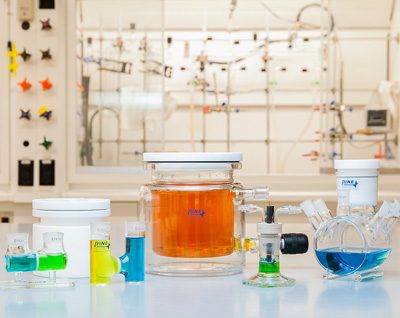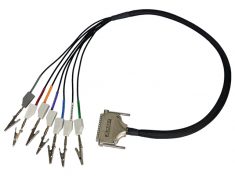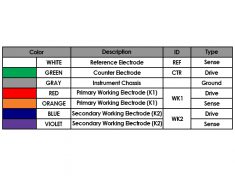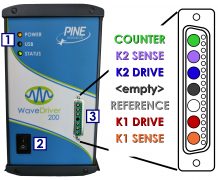| # | Description | Price in USD | |
|---|---|---|---|
| Cell Cable Kit | |||
| ACP3E01 |
WaveDriver Bipotentiostat Cell Cable for use with WaveDriver 20, 40 and 200 bipotentiostats |
||
| Accessories | |||
| THCLIP |
Alligator Clip |
||
This general purpose cell cable is for use with any WaveDriver Bipotentiostat/Galvanostat system. Pine Research offers truly integrated dual-channel bipotentiostats, and this cable provides quick-and-easy connections to one or two working electrodes located in the same electrochemical cell. The cable breaks out the seven main electrode connections from the potentiostat cell connector as follows:
- RED - primary working electrode (drive)
- ORANGE - primary working electrode (sense)
- BLUE - secondary working electrode (drive)
- VIOLET - secondary working electrode (sense)
- GREEN - counter electrode (drive)
- WHITE - reference electrode (sense)
- GRAY - instrument chassis (ground)
The six electrode lines are shielded coaxial cables. All seven lines terminate at standard banana plugs. A set of alligator clips that can slide onto the banana plugs is also included.









